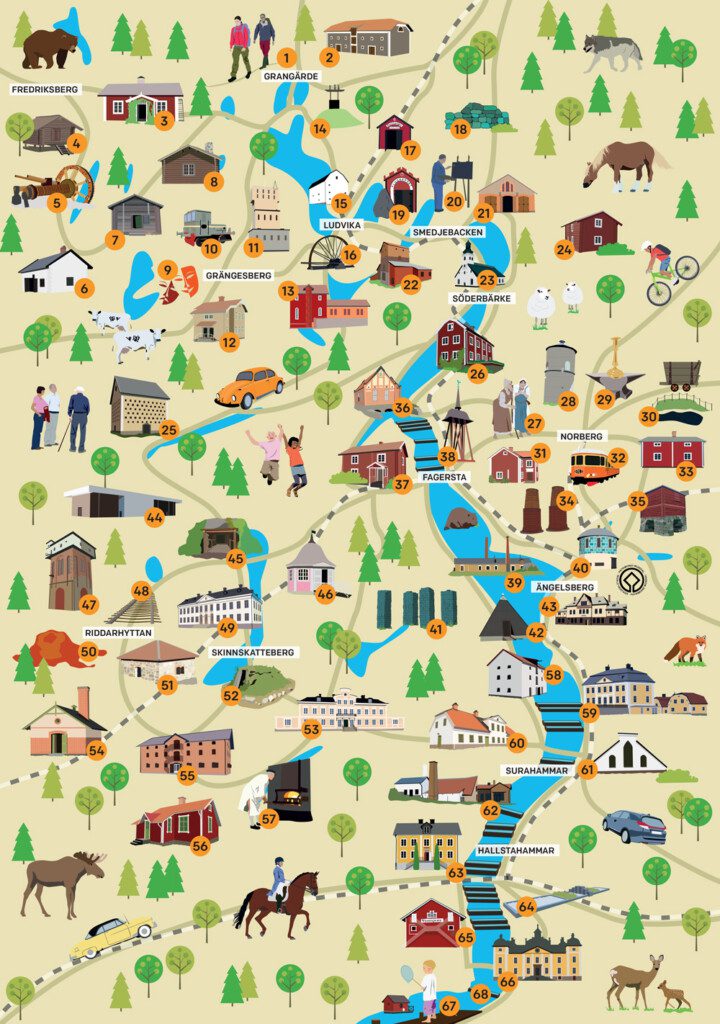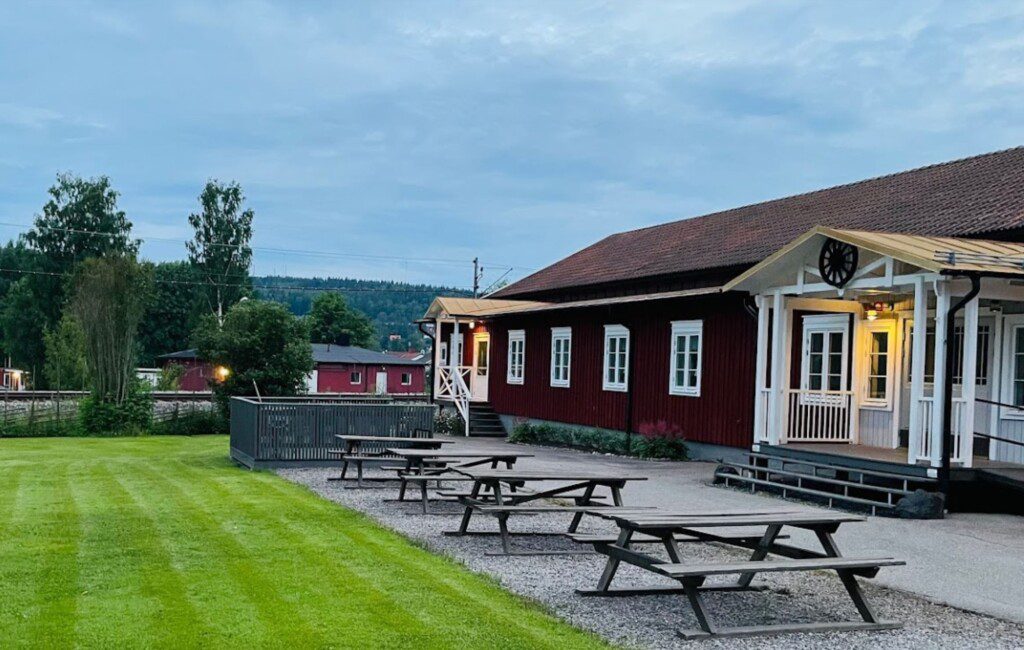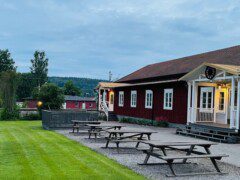Ecomuseum Bergslagen
Multi site consisting of 68 sites.
Description:
Bergslagen Ecomuseum
The Ecomuseum Bergslagen is a network of almost 70 different places to visit since 1986, all on the theme of industrial history. This is an area about 20 kilometers long from Grangärde Finnmark in Dalarna to Mälardalen in Västmanland. Most of the destinations are authentic and are in the same place in the landscape as they once were. Today's places tell about life and work, technology and mining in Bergslagen in the past.
This is the basic idea of the EKOmuseum concept. The word eco comes from the Greek word “oikos” which means family, whole.
In the Ekomuseum Bergslagen you can experience both large and small historic environments, everything from the World Heritage Engelsberg Mill and Strömsholm Castle. You can choose to join guided tours or go on your own, for example on the hiking trail in Finnmarken. There are also visitor huts and pits, farms and museums, miners' farms, forges and mill patrons' homes with food and lodging and much more.
The extensive network of the Ekomuseum Bergslagen includes non-profit associations and private entrepreneurs who own and operate many of the visitor destinations.
In 1990, a foundation was established with the aim of working together to shed light on the history of Bergslagen and develop a network of attractive tourist destinations.
The founders are the municipalities Ludvika and Smedjebacken in Dalarna, Fagersta, Norberg, Skinnskatteberg, Surahammar and Hallstahammar in Västmanland and the provincial museums in Dalarna and Västmanland.
The foundation's director of operations as of January 2019 is Malin Andersson.
Email: malin@ekomuseum.se

Guided tours:
Educational services:
Other services:
Useful Information (updated info on the structure's website)
Website: https://ekomuseum.se/
Text source: ecomuseum website
Photo: Google
CEIPEM PROJECT: Heritage Interpretation Experience Centres, Ecomuseums and Museums
For detailed information on the procedures for entering, modifying, deleting and classifying structures, see the reference page:
CEIPEM Project: Heritage Interpretation Experience Centers, Ecomuseums and Museums



